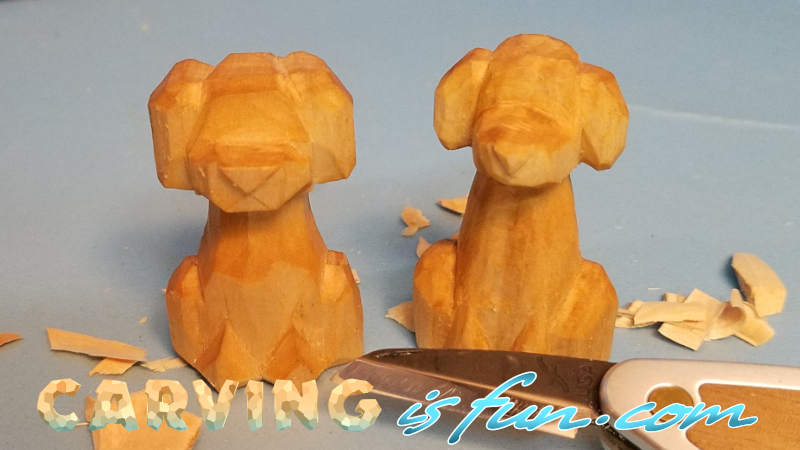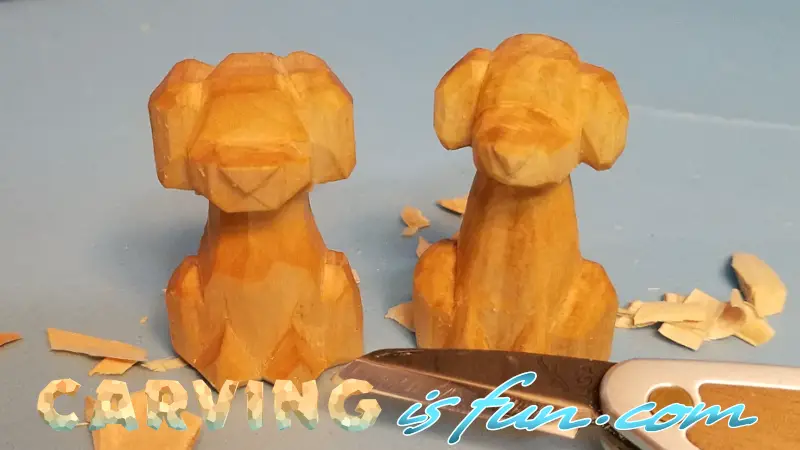Are you curious about wood carving? Wondering if it’s difficult to master this craft? Well, you’ve come to the right place! In this article, we’ll delve into the world of wood carving and answer the burning question: Is wood carving difficult?
Wood carving is an ancient art form that has captivated people for centuries. From creating intricate designs to carving beautiful sculptures, wood carving offers a unique and rewarding experience. But is it difficult to get started? Let’s find out!
Whether you’re a beginner or have some experience, we’ll explore the challenges and joys of wood carving, and offer some tips and insights along the way. So, grab your tools and let’s dive into the world of wood carving to uncover its secrets!
Wood carving can be challenging, but with practice and patience, anyone can learn this rewarding craft. It requires attention to detail, steady hands, and the right tools. Start by selecting a softwood and gathering the necessary carving tools. Learn the basic carving techniques such as chip carving, relief carving, and carving in the round. Practice regularly and seek guidance from experienced carvers. With time, dedication, and a passion for creativity, you’ll master the art of wood carving.

Is Wood Carving Difficult? Exploring the Art of Sculpting with Wood
Wood carving is a traditional craft that has been practiced for centuries. It involves creating intricate designs, sculptures, or decorative objects by removing wood material with the use of various tools. Many people wonder if wood carving is difficult to learn and master. In this article, we will delve into the world of wood carving, exploring its challenges, benefits, and tips for beginners.
The Art of Wood Carving: A Skill of Patience, Precision, and Creativity
Wood carving is a skill that requires patience, precision, and creativity. It is not a craft that can be mastered overnight, but with dedication and practice, anyone can become proficient. One of the primary challenges in wood carving is developing the ability to visualize the final piece within a block of wood. It requires a keen eye for detail and the ability to work with the natural grain and texture of the wood.
Additionally, wood carving demands precision in handling carving tools such as chisels, gouges, and mallets. Learning to use these tools effectively and safely takes time and practice. Beginners may find it challenging to achieve smooth and clean cuts at first. However, with patience and persistence, they can develop the necessary skills to create intricate and refined designs.
Despite the challenges, wood carving offers a rewarding creative outlet. The process of transforming a simple piece of wood into a beautiful and unique sculpture can be incredibly fulfilling. It allows individuals to express their artistic vision and create pieces that are truly one-of-a-kind. Through wood carving, craftsmen and hobbyists can bring life to their ideas and leave a lasting imprint on the wooden canvas.
The Benefits of Wood Carving: Mindfulness, Relaxation, and Stress Relief
Wood carving is not only a creative pursuit but also a therapeutic activity that offers numerous benefits. Engaging in wood carving can promote mindfulness and relaxation. As carvers focus on the intricate details of their work, they immerse themselves in the present moment, cultivating a sense of calm and tranquility. The repetitive nature of carving can also have a meditative effect, helping to reduce stress and anxiety.
Furthermore, wood carving provides an avenue for self-expression and personal growth. It allows individuals to explore their creativity, develop their artistic skills, and learn to trust their instincts and intuition. Wood carving can foster a sense of accomplishment and boost self-confidence as carvers witness their skills improve and their artwork take shape.
Wood carving is also an environmentally friendly craft. It promotes the use of sustainable materials and encourages the appreciation and preservation of natural resources. By working with wood, carvers connect with nature and gain a deeper understanding of the beauty and versatility of this renewable material.
Tips for Beginner Wood Carvers: Starting Your Journey with Confidence
If you’re a beginner interested in exploring wood carving, here are some tips to help you start your journey with confidence:
1. Start with the right tools: Invest in a basic set of carving tools that include chisels, gouges, and a mallet. Choose tools with quality blades and comfortable handles.
2. Practice safety precautions: Wood carving involves sharp tools, so it’s crucial to prioritize safety. Always wear protective gear such as gloves and goggles, and carve in a well-ventilated area.
3. Start small: Begin with simple projects and gradually progress to more complex designs. Starting small allows you to develop your skills and gain confidence before tackling larger and more intricate pieces.
4. Learn from experienced carvers: Join wood carving communities or attend workshops where you can learn from experienced carvers. Their guidance and insights will accelerate your learning process.
5. Take breaks and rest: Wood carving requires focus and concentration. Remember to take regular breaks to rest your hands and prevent strain or fatigue.
6. Experiment with different types of wood: Explore different types of wood to understand their characteristics and find the one that suits your carving style and preferences.
7. Embrace mistakes: Mistakes are part of the learning process. Don’t be discouraged by them; instead, learn from them and use them to grow as a wood carver.
By following these tips and embracing the challenges and rewards of wood carving, you can embark on a fulfilling and enriching artistic journey. With practice and perseverance, you will develop the skills and confidence needed to create beautiful wooden masterpieces.
Exploring Wood Carving Techniques: From Relief Carving to Chip Carving
Key Takeaways – Is Wood Carving Difficult?
- Wood carving can be challenging, but with practice and patience, it can be mastered.
- Starting with simple projects and gradually progressing to complex ones can help beginners gain confidence.
- Learning different carving techniques and tools is essential for successful wood carving.
- Having the right safety precautions in place, such as wearing protective gear, is crucial to avoid accidents.
- Joining a wood carving community or taking classes can provide guidance, support, and valuable tips for aspiring wood carvers.
Frequently Asked Questions
Wood carving can be a fascinating and fulfilling hobby, but is it difficult? Here are some common questions and answers to help you understand the challenges and rewards of wood carving.
1. What are the main challenges of wood carving?
Wood carving requires patience, precision, and practice. It can be physically demanding, as it involves using sharp tools and carving through dense materials. One of the main challenges is developing the necessary skills to control the tools and create detailed and smooth cuts. Additionally, wood carving requires an understanding of wood grain and how it influences the carving process. While it may be challenging at first, with dedication and practice, you can overcome these obstacles and improve your skills.
It’s important to start with simpler projects and gradually work your way up to more complex designs. This will help you build confidence and develop essential techniques. Don’t get discouraged if your early carvings don’t turn out perfectly. Mistakes are part of the learning process, and each one will teach you something valuable.
2. Can anyone learn wood carving, or does it require artistic talent?
Wood carving is a skill that can be learned by anyone, regardless of artistic talent. While having an eye for design and aesthetics can be beneficial, it is not a requirement. Wood carving is more about mastering the techniques and understanding how to work with different types of wood. With dedication and practice, anyone can become proficient in wood carving.
There are many resources available, such as online tutorials and classes, that can guide you through the learning process. Start with basic projects and gradually progress as you gain confidence and experience. Remember, practice is key, and over time, you will develop your own unique style and artistic vision.
3. How long does it take to become skilled at wood carving?
Becoming skilled at wood carving takes time and practice. It is not something that can be mastered overnight. The learning curve will vary depending on your dedication, the amount of time you can dedicate to practicing, and your natural aptitude for the craft. It’s important to be patient with yourself and enjoy the journey of learning and improving.
Some carvers may become proficient in a few months, while others may take years to reach a high level of skill. It’s important to keep in mind that wood carving is a continuous learning process, and even experienced carvers are constantly refining their techniques and exploring new styles.
4. What tools and materials do I need to get started with wood carving?
To get started with wood carving, you will need a basic set of carving tools, which typically include a carving knife, gouges in various sizes and shapes, and a mallet. These tools can be purchased from specialized carving stores or online. It’s important to invest in quality tools that are easy to handle and maintain.
In terms of wood, it’s best to start with softer woods, such as basswood or pine, as they are easier to carve. As you gain more experience, you can move on to harder woods with more complex grain patterns. It’s also important to have a safe and comfortable workspace with good lighting and ventilation.
5. Are there any safety precautions to consider when wood carving?
Wood carving involves working with sharp tools, so it’s crucial to prioritize safety. Always wear protective gear, such as safety glasses and gloves, to prevent injuries. Make sure your tools are sharp and well-maintained to avoid slips and accidents. It’s also important to have a stable workbench or carving station to provide a secure and comfortable working environment.
When carving, always cut away from yourself and keep your non-carving hand out of the way to avoid accidents. Take breaks when needed to prevent fatigue, as tiredness can lead to lapses in concentration. Lastly, always be mindful of your surroundings and keep your workspace clean and organized to minimize hazards.
Is wood carving hard to learn?
Summary
Carving wood is a fun and rewarding hobby that anyone can try, regardless of skill level. It may seem difficult at first, but with practice and patience, you can become a skilled wood carver.
Wood carving requires the right tools and safety precautions, but once you get the hang of it, you can create beautiful works of art. Remember to start with simple projects, like carving a basic shape, and gradually work your way up to more complex designs. Don’t be discouraged by mistakes; they are part of the learning process. So go ahead, give wood carving a try, and let your creativity shine!
